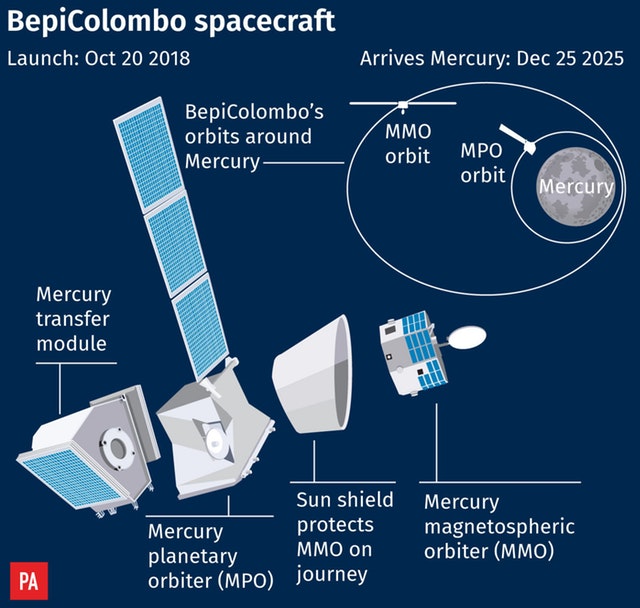Why in news?
The European Space Agency (ESA) and the Japan Aerospace Exploration Agency (JAXA) successfully sent two probes on a joint mission to Mercury.
What is the mission on?
- It is the first European mission to Mercury.
- It is also the first to send two spacecraft to make complementary measurements of mercury and its environment at the same time.
- An Ariane 5 rocket was launched from French Guyana.
- It lifted an unmanned spacecraft, BepiColombo, which is carrying the two probes.
- The spacecraft separated and went into orbit for the 7-year trip to Mercury.
What are the components?
- The orbiters are ESA’s Mercury Planetary Orbiter (MPO) and JAXA’s Mercury Magnetospheric Orbiter (MMO, or ‘Mio’).
- A third component is the ESA-built Mercury Transfer Module (MTM).
- MTM will support the duo during the long cruise to the solar system's innermost planet.
- BepiColombo is scheduled to slip into orbit around Mercury in December 2025, after nine different planetary flybys (one of Earth, two of Venus and six of Mercury).
- It uses a combination of solar electric propulsion and the gravity assist flybys.
- Gravity assists flybys are precision maneuvers that involves the harnessing and using the gravity of a planet to accelerate and direct a spacecraft to its destination.
- Flybys are essentially used to increase the energy of a spacecraft's solar orbit beyond the velocity afforded by its launch vehicle.

What are the objectives?
- Venus en route - The two orbiters will be able to operate some of their instruments during the cruise phase, to try and collect data at Venus.
- Also, some of the instruments designed to study Mercury in a particular way can be used in a completely different way at Venus (has a thicker atmosphere).
- Mercury - A few months before reaching Mercury, the transfer module will be abandoned.
- This will leave the two science orbiters to be captured by Mercury’s gravity.
- MPO will separate and descend to its own orbit, and together the orbiters will make measurements.
- The diverse data gathered by the duo will offer a comprehensive picture of the rocky planet.
- It would shed light on its composition, structure, magnetic field, formation and evolution, among other characteristics.

- Challenges - The Sun’s enormous gravity makes it difficult to place a spacecraft into a stable orbit around Mercury.
- Thus the mission will have to ensure a controlled fall.
- Also, the spacecraft has hence been specially designed for extreme temperatures.
Source: Indian Express

